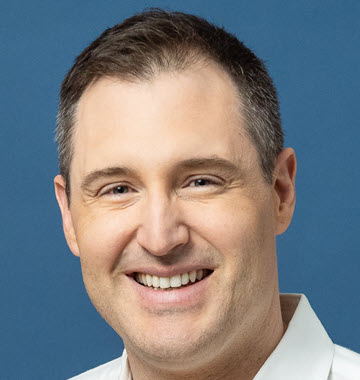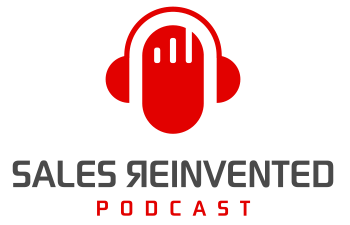Episode #347: Steve Benson

Meet
Steve Benson
Steve Benson is CEO and founder of Badger Maps, the #1 App in the App Store for outside salespeople to upgrade existing CRMs with mapping, routing, and scheduling. Steve is also founder of Badger Sales University. After receiving his MBA from Stanford, Steve joined Google, where he became Google Enterprise’s Top Sales Executive globally in 2009. He also hosts the Outside Sales Talk – a podcast specifically for outside salespeople, and is the current President of the Sales Hall of Fame.
Our Mission Is To Change The Negative Perception Of Sales People
Our Vision Is A World Where Selling Is A Profession To Be Proud Of
Some referrals are through people you have relationships with. Others are from friends and family. Still others are from customers. They all have a different impact depending on the industry you’re in. But generally speaking, referrals need to be a large part of your sales strategy. Steve Benson agrees with this sentiment but believes there’s an easier way to get referrals: Call them “introductions” instead. Listen to this episode to learn why he takes this stance!
Outline of This Episode
- [1:05] What are referrals? How do they work?
- [1:52] Common mistakes salespeople make asking for referrals
- [2:38] How to leverage social media to generate referrals
- [3:23] Using referral-based selling as a sales strategy
- [4:41] How to measure the success of a referral program
- [6:11] How to ask for referrals without being pushy
- [6:40] Best practices for requesting referrals
- [8:08] The role of technology in referral selling
- [10:35] Steve’s top 3 referral selling dos and don’ts
- [12:29] Leveraging the power of introductions
Common mistakes salespeople make asking for referrals
The biggest mistake Steve sees is when salespeople ask for a reference in a way that sounds selfish. You need to frame it as less of a favor and more of an introduction between people who could have a great business relationship.
If you’re actively looking for introductions to a certain organization, you can look at your connections—friends, family, old classmates, acquaintances, etc.—to figure out who can make an introduction.
As a company, the first thing you need to do is get everyone comfortable with asking for introductions. The customer-facing people won’t always realize what an effective and inexpensive source of leads referrals are. The key is to position it as an introduction. Then you become a connector of people as opposed to someone asking for a favor.
Using referral-based selling is a great strategy
Referral-based selling works best in certain industries, especially those in which the end customer might not know they could benefit from what you have (or they’re not in the market for it). You might have a better solution for them.
Your customers are the best people to introduce you to others because they know the value you provided for them. If you cut someone’s car insurance costs by 40%, they’re a great person to ask for an introduction.
The role of technology in referral selling
Your technology should make it easier for someone to make a referral. And if someone chooses to send you a referral, you should offer an incentive. Badger Maps customers are able to give away a free month to referrals and get a gift certificate in return. If you find a way to gamify introductions—or make it fun—you’re more likely to have a successful program.
Leveraging the power of introductions
Badger Maps sells to field salespeople. Introductions are an important part of their go-to-market strategy.
When Badger Maps first launched, a guy named Matt worked for a large company (350+ sales reps) that sells to dentists. The app couldn’t do routing, scheduling, leads, etc. at this point. But users had a map on their iPad to see where their customers were.
Matt saw success using the product. So he told his managers about Badger Maps and got his whole team on it. Then his entire region started using Badger Maps. He became a sales trainer and rolled it out with the entire company.
You can use personal referrals to grow within companies, across companies, and even in different industries. Matt wanted to introduce people to Badger Maps because it was good for his career. When you create value for people and help them be successful, they will help you grow. That deal paid for 70% of their costs for an entire year.
Connect With Paul Watts
Audio Production and Show notes by
PODCAST FAST TRACK
https://www.podcastfasttrack.com
Learn More About Steve Benson
Are there any books, podcasts, or classes on Referral Selling that you recommend? Here is a great talk on Referral Selling on Outside Sales Talk.
In the field of ‘Referral Selling’ – Who do you most admire and why? Joanne Black taught me most of what I know about Referral Selling.
How can salespeople track and measure the success of their referral program? The CRM needs a field that covers where prospects are sourced. Then you can run analytics in a bunch of useful ways to gain real understanding about what is working and what isn’t.
What are some common reasons why customers may not provide referrals, and how can salespeople overcome these obstacles? The biggest reason that people don’t provide referrals for vendors that they like is that they weren’t asked. Putting a referral program that compensates the person giving the referral and the referee is also helpful here.
What is the difference between a referral, an introduction and a lead? A referral includes a recommendation for a product or service. An introduction is an invitation to a conversation by someone who knows both parties involved. A lead is information about someone who may be interested in a product or service.
How do you determine which customers to target for referrals, and what are some effective strategies for reaching out to them? The people who interact with your customers should periodically ask them how likely they are to recommend your service to a friend, and if people say 8, 9, or 10, you should ask them for a referral. This should be a part of the interactions with your customers that happen on a schedule, and the asking for the referral and the results should be measured.
What are some potential risks or downsides to relying heavily on referrals for new business, and how can sales teams mitigate these risks? I guess the only downside I can think of is if your customers aren’t happy with your product you aren’t going to get new leads. But that would be a part of a larger problem.
Finally, what advice would you give to salespeople who are looking to launch a referral program or improve their referral generation skills? Script it, plan it, measure it. Repeat.
Share This Episode, Choose Your Platform!
